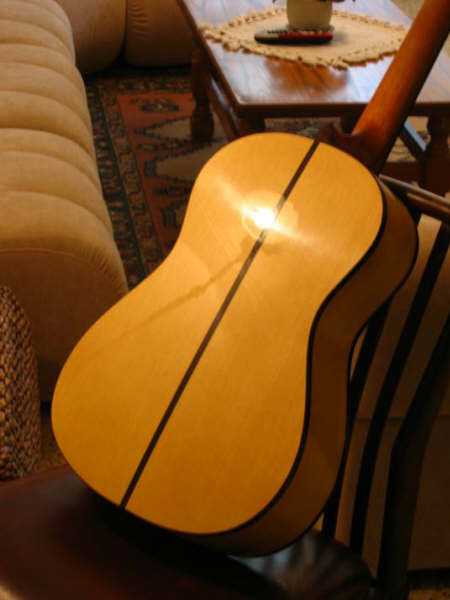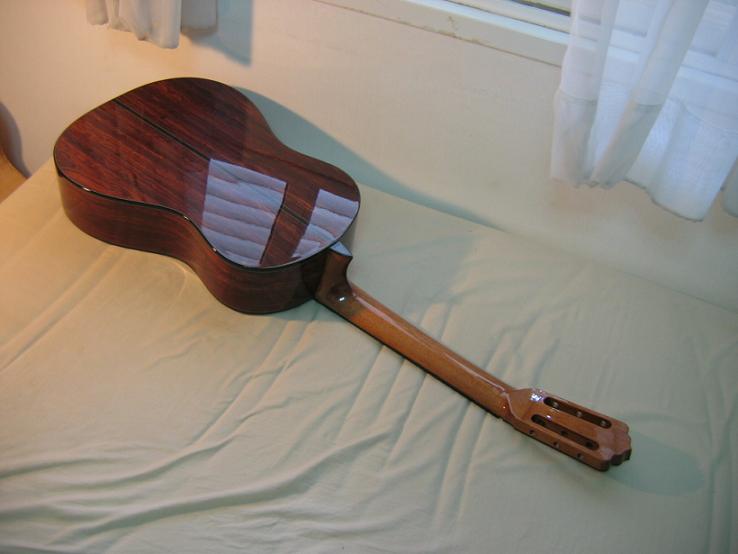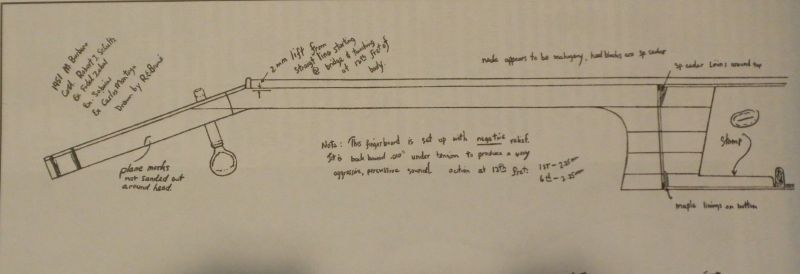|
aarongreen -> RE: All you LUTHIERS - neck angle and neck relief ? (Oct. 22 2013 12:25:32)
|
quote:
So Aaron, your post really is weird.
Do you really mean that that 51 Barbero should have back bow?
If so, WHY?
Absolutely NO stringed instrument with a neck Works well with backbow. It doesnt matter if they have frets or no.
Please tell me why not arguing with Brune. Is he to "fine" to argue with. I argue with anyone saying crap.
So why is the back bow intentional?
Maybe the guitar just had a refret one day with some frets with a thicker tang than the original and so the neck bended back. That has happened to many a fine guitar or maybe the neck backboved because of humidity change.
You say that it Works with a bit of buzzing with a 3,2mm setup. Have you ever thought about if the guitar was fixed, meaning having a slight relief a new frets, you could most probably lower the action 0,5mm at the 12th fret and get the same amount of buzzing and at the same time a more even buzzing all over the fret board.
I hope this is not one of these ideas that because a guitars was once owned by a famous player and later inspected by a famous inspector, then nothing can be discussed. Because thats really a nobrain attitude. If someone wants to keep the instrument "original", then its their problem. But who on earth knows how this guitar was setup when it left Marcello Barberos workshop in 1951 and maybe good old Barbero is turning around in his grave, crying: "fix that guitar as soon as posible"
Whoa settle down there Anders, you need to relax. First of all, the guitar plays great, second of all the degree of backbow is very slight and third of all it does not impede the guitar from being a very viable and excellent guitar. I am sure Barbero is not rolling in his grave.
I trust you are not implying that my feelings on this guitar, having lived with it for a few years is based solely on other people's assessments or who owned it. That would be just a tad insulting and completely off base. I've worked on many valuable and historically important guitars and I do what is needed to make it a viable musical instrument, often that means taking the very long way around a problem due to it's value but at the end of the day, I am confident in my own assessment of what comes through my shop
What I wrote was Brune says the back bow was intentional and I won't argue with _that_. One can intend to do anything, whether or not you think it's a good idea. He is basing this partially on conversations he had with Reyes, if I remember correctly and then of course his own 40 something years of experience with these guitars. You want to argue with him whether or not it's a good idea, ok fine, but you need to be clear that that is not what he said either...He just said it was intentional. And for the record, the action on the guitar when I got it is lower than I do on my own blancas, which generally have almost no relief these days. I don't agree that relief is always a good idea, in fact I use less than I used to and my guitars now buzz less and are easier to play.
As I also said, some guitars just buzz more than others and some guitarists buzz more than others. Besides that set up is incredibly personal I find. Sabicas never buzzed according to Dennis. He said it was one of the most incredible aspects of his touch, he could play anything and make it sing. According to his tech, Hendrix was the same way with his rig and uncontrollable feedback, no one could play his guitar through his rig and get anything but feedback but Jimi could control it just fine and it was set up as he required it to be.
|
|
|
|



